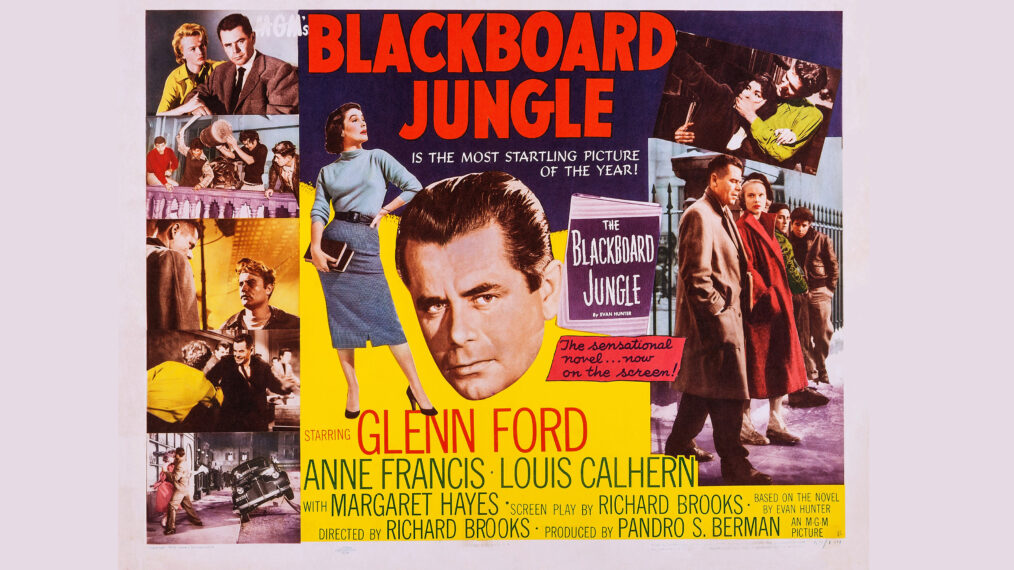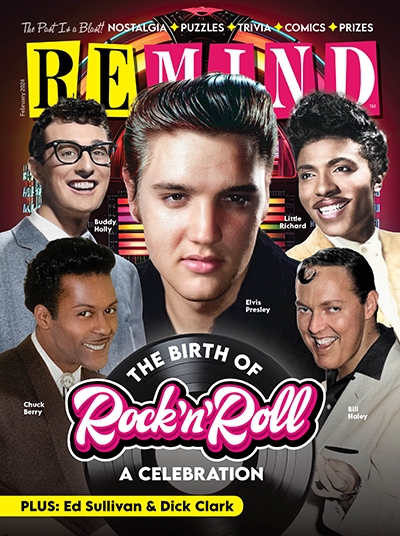Actor Glenn Ford’s Son Peter Recalls His Vital Link to ‘Blackboard Jungle,’ Which Came Out in 1955

The 1955 movie Blackboard Jungle, which premiered on March 25, helped integrate rock ’n’ roll into mainstream culture and gave Glenn Ford’s star a meteoric rise. In the drama, Ford played an inner-city high school teacher dealing with the thuggish behavior of his students — and the actor’s son Peter played a huge role behind the scenes. Here, in an edited excerpt from his acclaimed biography, Glenn Ford: A Life, Peter Ford describes how “Rock Around the Clock” — Bill Haley & His Comets’ biggest hit — came to figure so prominently in the film:

Hulton Archive/Getty Images
By the fall of 1954, when Blackboard Jungle was in production, I was a precocious fifth grader. I didn’t have many close friends and music was my passion. I was very much into … the amalgam [of new sounds] that would come to be known as rock ’n’ roll. One of the records I bought during the fall of 1954 was “Thirteen Women (and Only One Man in Town)” by a raucous band called Bill Haley & His Comets. I was disappointed to find that I didn’t much care for “Thirteen Women.” I turned the record over to play the “B” side … and listened to those now-familiar opening bars of “Rock Around the Clock.” My eyes opened wide, and my foot started tapping as I heard that irresistible recording the first time.

Everett Collection
Toward the end of the filming of Blackboard Jungle, my father and director Richard Brooks began to discuss the need to use musical recordings in the film that would reflect what these kids would be listening to in real life. Naturally my father suggested his son, Peter, had the most up-to-the-minute records in town. We listened to “Rock Around the Clock” and a couple of other records; Brooks asked if he could borrow them. He brought them to the studio the next day and … everyone agreed that “Rock Around the Clock” was the perfect choice for the movie.
When the film was completed, my father took me to a preview. I was anxious to see whether they had used any of those records of mine that Richard Brooks borrowed.
The theater grew dark. We saw the familiar roaring lion of the MGM logo. An empty blackboard appeared and with it came another familiar sound: a drum beat and the voice of Bill Haley counting out, “One, two, three o’clock, four o’clock rock!” There it was — my record, playing over the credits and then weaving through the first minute of the film.
It was the first rock song used in a motion picture. By July 1955, seven months after Richard Brooks first heard my copy at our house, “Rock Around the Clock” was the No. 1 record in the nation and stayed at the top of the charts for eight weeks, selling 8 million copies. It helped change the culture of America and much of the world forever. And I am very pleased to be able to say I played a tiny role in launching a musical revolution.

Birth of Rock 'n' Roll
February 2024
"Long live rock," we like to say, but how did it come to life? Revisit the memorable moments, music and movies that made teens go beat crazy back in the 1950s.
Buy This Issue